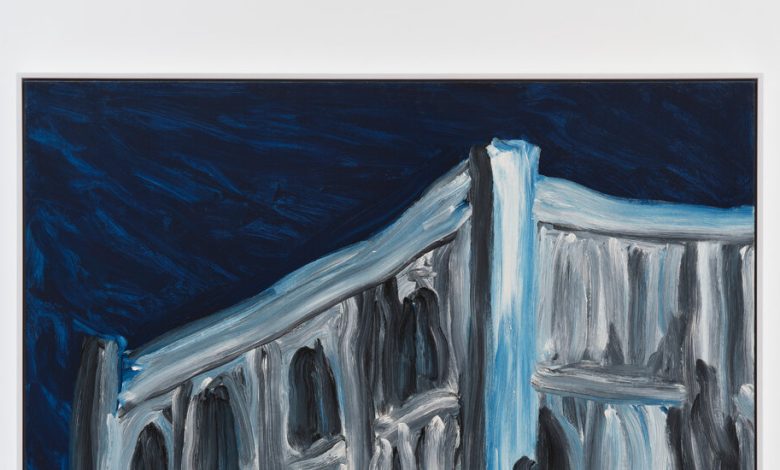In Martha Diamond’s Art, She Took Manhattan

Martha Diamond, who died in December, at age 79, was remarkably consistent in her subject matter — namely New York architecture — but extraordinarily wide-ranging with what a painting of a building could signify.
In some of the works displayed in her first show at the David Kordansky Gallery, “Martha Diamond: Skin of the City,” it seems as if her only concern was for color; in others, abstract form takes over. Some locations are identifiable; other pictures are not even recognizable as buildings. In a painting such as “New York With Purple No. 3” (2000), the tall buildings appear to evaporate into the busy sky, architectural solidity succumbing to shimmering atmosphere and dappled, springtime light.
Diamond’s paintings may have been of New York, her muse since she settled into a loft on the Bowery in 1969, but they are about so much more besides.
It is perhaps unsurprising that someone living in that compressed, vertiginous metropolis would develop an attunement to the particularities of scale. Her small studies — preparatory exercises for the large-scale works that follow — are tightly organized, keyhole views onto the grandeur of the city; most are on Masonite boards around 16 or 20 inches tall. As in “Study for Yellow Sky,” a vigorously brushed evocation of bright blue buildings against a sulphureous background, done in 1986, she could pack a colossal amount of energy into a confined space.
Now take in the humongous “Yellow Sky,” the fully realized manifestation of the small study. The canvas, 10 feet wide, confidently rules the room. The sensation of moving from the study, hung in a smaller viewing room, to this large painting in the main gallery is rather like the “Vertigo effect,” the technique named for Alfred Hitchcock’s movie in which the camera moves toward or away from its subject while zooming in the opposite direction. The subject remains more or less static, while the space around it explodes.



